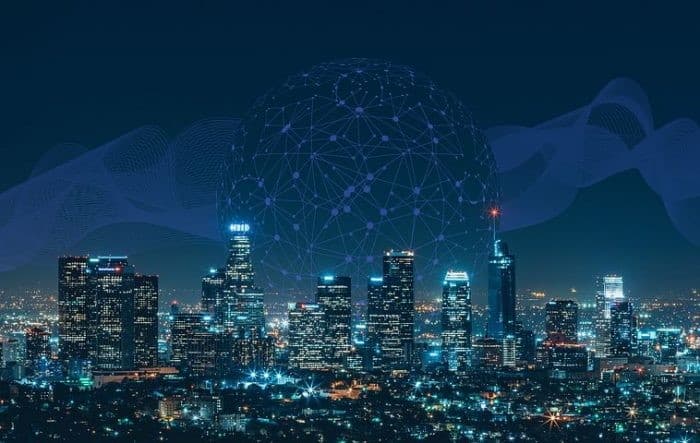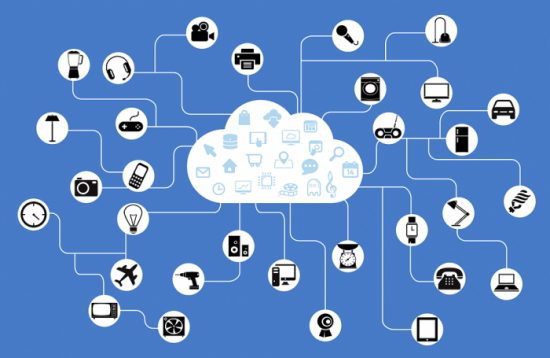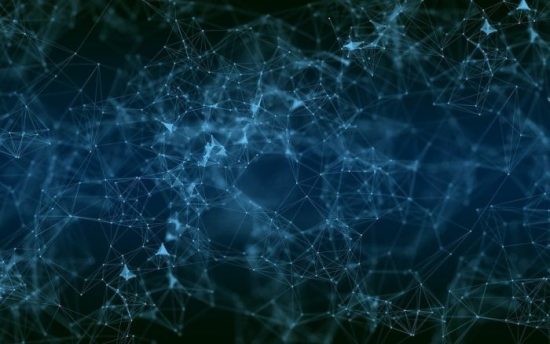Explaining the Relationship Between IoT, Big Data and the Cloud

Big Data, IoT and the Cloud are digital solutions that enable better analytics and decision-making for your business. In this post, we explain the relation between IoT and Big Data, how Big Data and Cloud Data are related and the relationship between IoT, Big Data and Cloud Computing holistically, discussing some of the key benefits of this relationship.
Big Data, IoT and the Cloud
The interdependent relationship between IoT, Big Data and Cloud Computing are utilised by market-leaders around the world, benefitting from innovation and giving them a competitive edge. With connectivity becoming increasingly necessary in our everyday working and social lives, we find ourselves with more devices connected to the Internet and to each other more than ever. Digital transformation and the need to have various devices connected and sharing data is now essential, for systems and communication within organisations to be clearer. The data transmitted by devices linked with the Internet is gathered for analysis, then patterns and trends are determined from this data gathering process to help the system perform well.
What is IoT?
The Internet of Things (IoT) is a reference to a collection of devices or objects that are linked together using an Internet connection. The hub for the collection (the “things” part) is what sends and collects data using the Internet, which helps the devices to make decisions and remember particular patterns and routines for action to be carried out without any manual involvement. IoT is about the connection of multiple devices to the Internet. These devices can include multiple appliances that need to be connected for reasons including automation and real-time control of the device. As the IoT has both real-time and historical data stored, it can provide effective decision-making instructions to devices, and control certain actions and aspects of when and how they function. This technology enables your systems and devices to be automated cost-effectively.
What is Big Data?
Differing from IoT, Big Data is about the process where structured and unstructured large quantities of data are analysed to gain insight into varying business patterns. Big Data refers to data which is also too vast or complex to process using usual methods, including what’s known as the four V’s:
1. Volume:
The amount of data collected from a variety of sources.
2. Velocity:
The rate of which data is being processed.
3. Variety:
The different types of formats of data that are transferring across systems.
4. Veracity:
The ability of your Big Data tools and analysis to separate poor quality and high quality data.
What is The Cloud?
The Cloud is a centralised system that helps to deliver and transport data and various files across the Internet to data centres. The different data and programmes can be accessed easily from the centralised Cloud system. Cloud Computing is an economic solution, as it does not require on-site infrastructure for storage, processing and analytics. The scalability of Cloud Computing means that as your business grows, your technological and analytical capabilities can too.
There are different types of Cloud services available, including Microsoft Azure Cloud development, and more information on each of these varying types of Cloud solutions can be found in our previous guide.

What is the Relationship Between IoT, Big Data and Cloud Computing?
The relationship between IoT, Big Data and Cloud Computing creates ample opportunity for business to harness exponential growth. Put simply, IoT is the source of data, Big Data is an analytic platform of data, and Cloud Computing is the location for storage, scale and speed of access.
Is Big Data Related to Cloud Computing?
Big Data is the large data set collected from large network-based systems. The Cloud is the location that this data is processed and accessed, usually using a software as a service (SaaS) model and utilising AI and machine learning to present data to users.
Big Data and Cloud Data have a symbiotic relationship, as the Cloud infrastructure effectively enables storage, real-time processing, and Big Data analysis at scale and quickly. The biggest benefit of using Cloud storage for your Big Data is this scalability: Cloud storage is available on a pay-as-you-go basis. Essentially, the Cloud is the mechanism that serves, stores and presents the opportunity for users to access and analyse Big Data efficiently.
Without Cloud Computing, there would be a huge amount of untapped potential within Big Data analytics, as current computers can’t analyse this scale of data feasibly, if at all. At the same time, Big Data plays a role in the development of Cloud Computing because without Big Data, there wouldn’t be anywhere near as much demand for Cloud-based solutions. So really, Cloud Computing services exist because of Big Data. The only reason we collect Big Data is that we now have the services capable of collecting, storing, and processing it. Simply, one would not exist without the other. A combination of the two can transform your organisation into an efficient, data-driven market leader.
What is the Relation Between IoT and Big Data?
The Internet of Things refers to the world’s collection of devices that gather and share information across various industries and sectors. In comparison, Big Data offers management and analytical capabilities for huge amounts of data across multiple platforms and systems. However, the interconnectivity between Big Data and Internet of Things means the two technologies share common goals and are predicted to follow a similar trajectory in the future.
So, How Is Big Data And The Internet Of Things Connected?
Once you can understand IoT and Big Data as separate solutions, you can appreciate why they work so closely with one another. When data is needed to be extracted for analysis reasons in a company, IoT is the source for that data. Big Data can then analyse and extract the relevant data to create the required information. As well as processing large amounts of data on a real-time basis, Big Data then stores the information using various storage technologies, making Big Data invaluable when it comes to utilising IoT’s functionalities and the extraction of data.
Another distinction lies in the data collection. For example, Big Data gathers data from human behaviour to create predictions or unearth behaviour patterns. In contrast, IoT’s data is machine-generated to produce optimal performance in machines or determine predictive maintenance.
However, they also work in tandem. IoT gathers immediate analytics data to support real-time decision-making. Big Data aids this function by acting as a storage solution for predictive analyses to anticipate future problems and create solutions. Working together, IoT and Big Data can examine inputs to show hidden correlations, unidentified patterns and expose new trends in your data set.
The interdependent relation between IoT and Big Data means that as IoT continues to grow rapidly, there is increased pressure on traditional data storage leading to more innovative Big Data solutions. Therefore, we will see companies forced to upgrade their technologies and systems to align with this growing demand.
Ultimately, Big Data and Internet of Things have common goals and rely on each other to achieve them by converting data into something actionable for businesses. For example, using real-time IoT insights combined with long-term Big Data analytics can be used to get a bigger picture of a company’s overall performance over time. As these technologies continue to develop, particular industries will reap the benefits. Industries such as the automotive, shipping, and haulage industries will benefit from using IoT and Big Data. The insights and knowledge extracted from the technologies will improve the analytics process, making it quicker and easier, improve efficiency, save costs, and promote informed decision-making and forecasting.
How are IoT and Cloud Computing Related?
The IoT and Cloud Computing complement one another, often being branded together when discussing technical services and working together to provide an overall better IoT service. However, there are crucial differences between them, making each of them an effective technical solution separately and together.
Cloud Computing in IoT works as part of a collaboration and is used to store IoT data. The Cloud is a centralised server containing computer resources that can be accessed whenever required. Cloud Computing is an easy travel method for the large data packages generated by the IoT through the Internet. Big Data can also help in this process. Combined, IoT and Cloud Computing allow systems to be automated in a cost-effective way that supports real-time control and data monitoring.

The Benefits of Using Big Data, IoT and the Cloud
So why are Big Data, IoT and the Cloud such a good partnership? Well, there are numerous benefits for utilising both of these services by combining them, with a few of the main benefits outlined below:
- Scalability for device data
Cloud-based solutions can be scaled vertically and horizontally to meet the needs of Big Data hosting and analytics. For example, you can increase a server’s capacity with more applications, or expand your hardware resources when necessary. The Cloud enables the expansion of Big Data and data analytics.
- Scalable infrastructure capacity
Big Data and Cloud Data can be used in conjunction to store large amounts of data and provides scalable processing and improved real-time analysis of data. The lack of physical infrastructure needed to get Big Data, IoT and the Cloud up and running together reduces costs and means you can focus on the improved analytical capacity rather than worry about maintenance and support.
- Increased efficiency in daily tasks
IoT and Big Data generate a large amount of data, which the Cloud provides the pathway for the data to travel.
- Quicker use and distribution of Apps worldwide
You can access Big Data remotely and easily from anywhere in the world to still carry out actions on devices when using the Cloud, allowing for better collaboration.
- Advancement on analysis and review of the status of connected IoT devices
A large number of devices can put pressure on Internet connection and creates the need for intelligent devices to send data to servers for processing versus to central servers. Now, you can be on the “edge” of processes, and access data from many areas within your network, respond faster to downtime and predict when errors may occur. Plus, using the Cloud with IoT helps to enhance security, as regular updates can be sent and knowledge of any breaches in infrastructure can be flagged up immediately.
- Benefits from economies of scale
Preserve business value with effective storage and management of your Big Data and IoT with the Cloud, which has in-built management tools, processing capabilities and applications to manage your resources.

Using Big Data, IoT, and the Cloud together means you can have successful communication, connection and transference of data between devices, most effectively and efficiently. Cloud Computing is, in essence, an enabler. It enables a hosting platform for IoT and Big Data as well as process and data analytics. The main benefit of using Cloud Computing alongside IoT and Big Data is that it’s a scalable, reliable and agile solution for businesses. The relationship between IoT, Big Data and Cloud Computing is a synergistic interdependency that gives your business access to actionable insights through analysis and performance reports.
To find out more about how you can use IoT and Cloud Computing within your business, please contact us at McKenna Consultants, so we can discuss how we can deliver a bespoke service to help you. Should you wish to learn more about the IoT and Cloud solution services we have delivered to companies in the past, then please check out our case studies.
